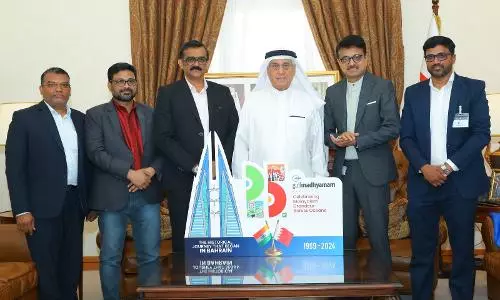
Indian scientists develop models to help improve hip, knee implants
text_fieldsNew Delhi: In a bid to improve hip and knee implants, Indian scientists have developed analytical models that can predict topography of electrical discharge textured (EDT) surfaces, aiding their customisation, an official statement said on Tuesday.
EDT surfaces have suitable surface topography and surface chemistry to promote tissue growth and adhesion, and surface topography prediction is important in EDT surfaces as the process generates characteristically random surfaces that are very difficult to predict.
"To optimise the EDT surface topographies for different applications such as orthopaedic implants and rake face of tool inserts, the topography is needed to be known at design stage through suitable methods of topography prediction. To this end, Professor at the Indian Institute of Technology Bombay, Suhas S. Joshi developed analytical and numerical models for prediction of surface topography, which were validated against experimental data," the Science and Technology Ministry statement said.
The work, supported by the Advanced Manufacturing Technologies programme of the Department of Science & Technology, and aligned with the 'Make in India' initiative, has been recently published in journals such as "Surface Topography: Metrology and Properties" and accepted for publication in the "Journal of Materials Processing Technology".
The analytical and numerical simulation of surface topographies generated using EDT, which was in good agreement with experimental data, can be developed into modules which could be used for surface texture prediction at different parameter combinations.
The topography prediction modules could help efficient and low-cost generation of textured surfaces with higher protein absorptivity as compared to non-textured surfaces, which is favourable for orthopaedic implants like hip and knee implants. The developed technology is in level 6 of the Technology Readiness Level, the release added.
























